

Federal News Network’s exclusive survey of nearly 5,000 federal employees finds that most still prefer telework, but find more questions than answers from the...
“Am I going back to the office?”
It’s the question now on many federal employees’ minds after the White House called on agencies to rethink their work locations and make changes where necessary.
Many federal employees are expecting agency leadership to soon tell them to come into the office more often. Others don’t think telework policies will change much at all.
But plenty of respondents to Federal News Network’s latest online survey were decidedly unsure.
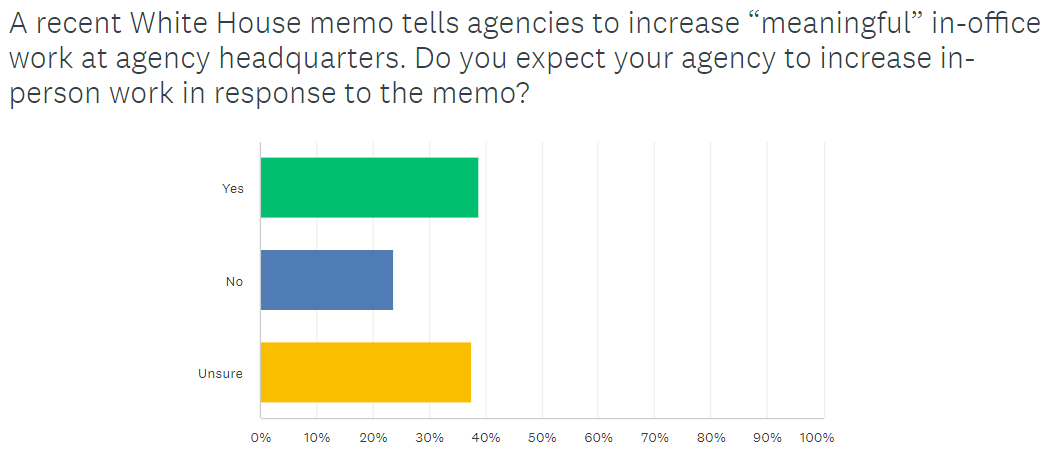
More than anything, our exclusive survey, which received 4,700 responses, revealed uncertainty and anxiety among many federal employees over return-to-office plans.
“There is so much confusion on this subject and it is coming from all levels at our agency,” one survey respondent said.
“I wish there was a more black-and-white policy because everyone seems very confused at my agency,” another respondent said.
“Unsure” was the word at the heart of our survey.
“Unsure how the memo is going to affect telework posture,” one respondent said.
“We are still unsure,” another said.
“Just unsure at this point.”
“Again, unsure.”
The Office of Management and Budget declined to comment on the results of Federal News Network’s survey.
The COVID-19 pandemic no longer dictates agencies’ approach to telework versus in-office work for feds. As a result, some level of change may indeed be coming. But no one, not even those making the federal workplace decisions, can be certain what happens next.
The language of OMB’s memo, at the most, is middle of the road. OMB said it expects agencies to substantially increase in-person work, but at the same time, continue using flexible telework policies. The guidance left many feds without clear answers.
Several survey respondents, though, said OMB has indeed been pushing agency leaders to bring employees back to the office more often.
“Senior management has said the directive from OMB is to return to in-person work, but they can’t say why or what that will look like,” one respondent said.
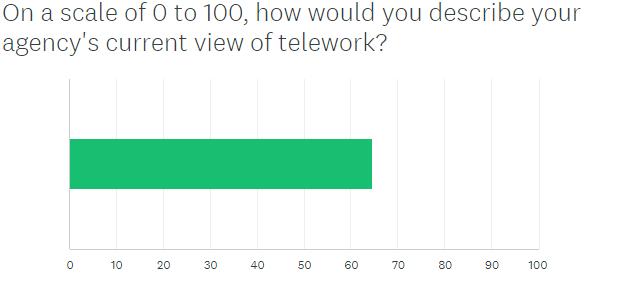
Now, federal employees are asking who, when and how often?
Many FNN survey respondents said telework should not be a one-size-fits-all approach — it should depend on the position. Plenty of federal employees cannot work remotely simply because of the nature of their job.
“Many employees must work with the public, so they need to show up a few days a week. The ones that don’t should have an option of one, two or three days a week in the office,” one survey respondent said.
Despite hearing recent acknowledgement of the memo from agency management, many respondents said the coming changes are still up in the air.
All agencies are now in the process of putting together new work environment plans. They will have to present their proposed changes to telework versus in-office work policies to OMB this summer. Most of the changes, for now, will likely be concentrated in agency headquarters offices.
OMB also tells agencies to measure hiring, retention and other workforce metrics to monitor how effectively they’re operating. If agencies’ ability to meet their mission starts to slip, they’ll have to change their workplace plans down the road.
OMB gained pushback from some agency leaders and federal unions for reportedly leaving them out of initial conversations and development of the memo, before publishing the new guidance.
In our survey, many federal employees said they felt similarly. A few respondents said the White House and OMB are “out of touch.” Some called the memo “ridiculous.”
“Right now, we have non-meaningful in-office days just to check a box,” one respondent said.
Others said ongoing challenges at agencies are not due to telework at all.
“The agencies with the more serious problems are largely facing a shortage of resources and seriously overworked employees. I’m facing that in my own agency and on my own team,” one respondent said.
When Federal News Network conducted a similar survey on telework last spring, though, a large majority of respondents either agreed or were neutral to the idea of OMB issuing more prescriptive return-to-office guidance for agencies.
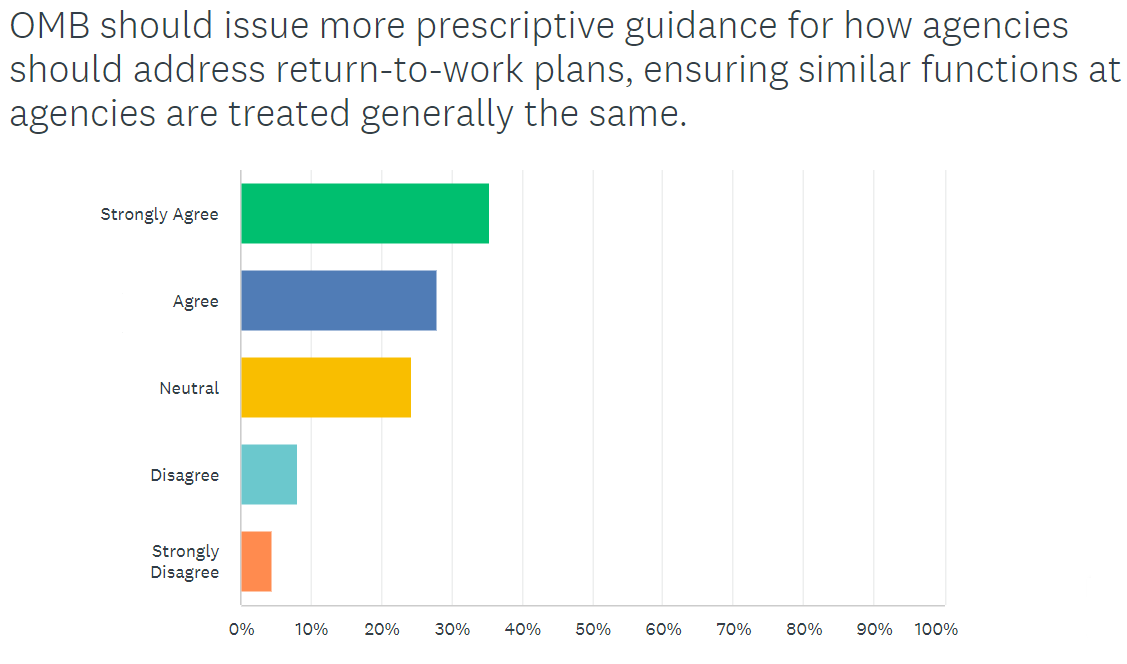
Despite the trend, many feds still said they wanted agencies to maximize telework for those who can perform their work from home.
“I don’t think OMB knows the needs our agency better than our management does. One solution is rarely the best for multiple parties,” one survey respondent said last year.
Others had said OMB should keep out of the picture — or at least just follow leading examples of workplace plans already in place.
“Maybe they should ask high-performing agencies for advice and not give it out. They are far from being workforce experts,” one respondent said last year.
The political divide over telework caused further concern for federal employees, after the SHOW UP Act cleared the House earlier this year, echoing a continuous push from Republicans to return the federal workforce to pre-pandemic telework levels.
In response, some federal employee survey respondents questioned the White House’s pivoted approach to telework.
“The Biden administration seems to be cowing to anti-telework forces in Congress. OMB and agency senior leaders are crumbling likewise,” one survey respondent said.
With notable consistency across many different surveys, the majority of federal employees said telework makes them more productive and better able to meet their agency’s mission. Many strongly prefer working from home.
In fact, roughly two-thirds of our survey’s respondents said they’d look for a new job if their agency decided to increase in-office work. Some may decide to leave government altogether.
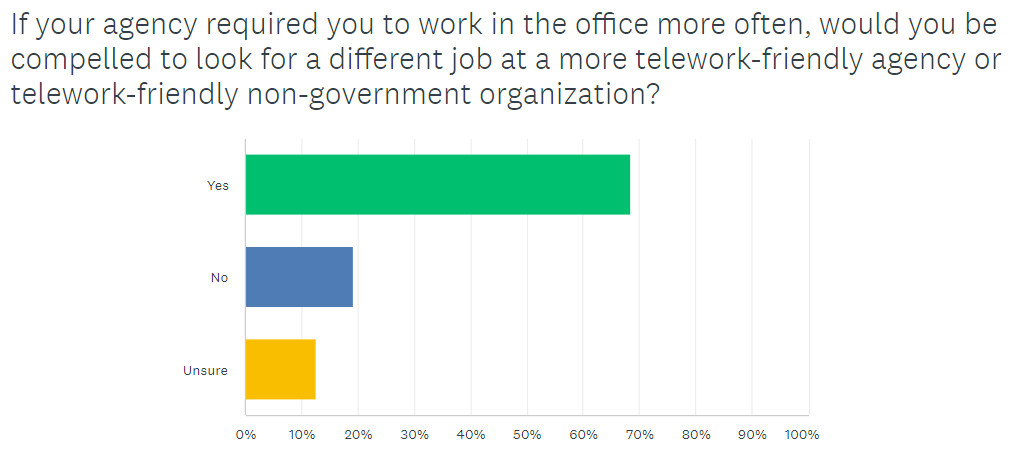
“With the confusion, employees are looking for positions that state they are remote. If they were allowed to be remote, they would not look elsewhere,” one respondent said.
Even those within the Biden administration are aware of the growing trend. Last year, Office of Personnel Management Director Kiran Ahuja said many federal employees now expect the work-life flexibility that telework allows.
“What we are seeing is agency-hopping, based on where employees see the level of flexibility,” Ahuja said during a 2022 House Oversight and Reform Committee hearing.
About one-third of survey respondents said their agency’s leadership has recently changed its stance on telework. Of those experiencing changes, two-thirds said their agency is becoming less telework-friendly.
“The agency seems to want to be more telework-friendly, but is bowing to political pressure instead of verified data collected and proven during the pandemic,” one survey respondent said. “They’re forcing in-office days, which is decreasing productivity, while increasing commuting costs and other difficulties.”
Respondents had some pretty telling answers, too, about how in-office work could be improved. For federal employees, one word stood out above the rest:
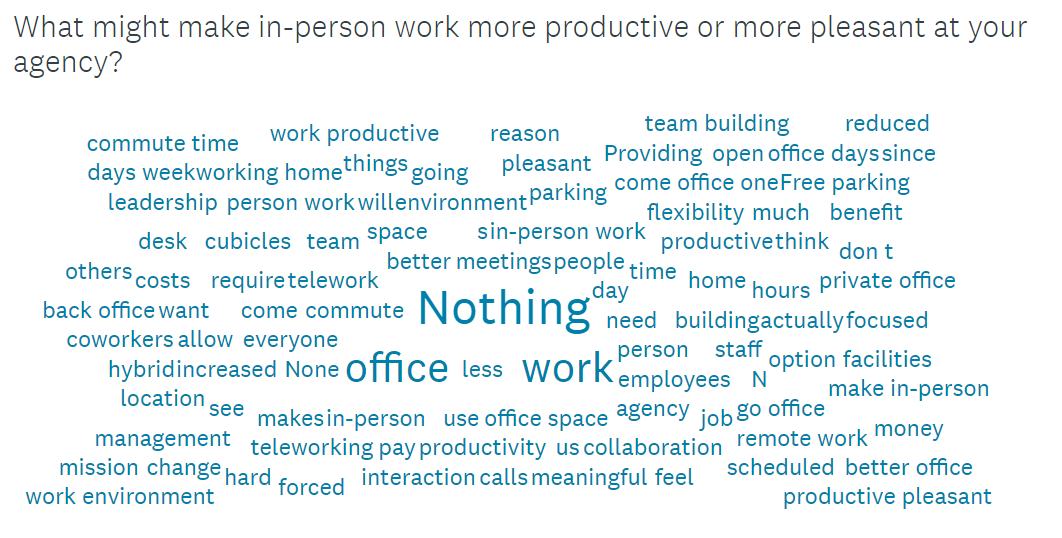
“Nothing.”
The initial 30-day deadline for agencies to submit work environment plans to OMB is rapidly approaching. In a matter of weeks, federal employees may start hearing more from leadership about the coming changes.
Until then, “unsure” remains the word of the day.
The state of California has a law that explicitly protects employees’ right to wear pants.
Source: California Employment Law Report
Copyright © 2024 Federal News Network. All rights reserved. This website is not intended for users located within the European Economic Area.
Drew Friedman is a workforce, pay and benefits reporter for Federal News Network.
Follow @dfriedmanWFED


